5 Birth Ball Positions for Labor
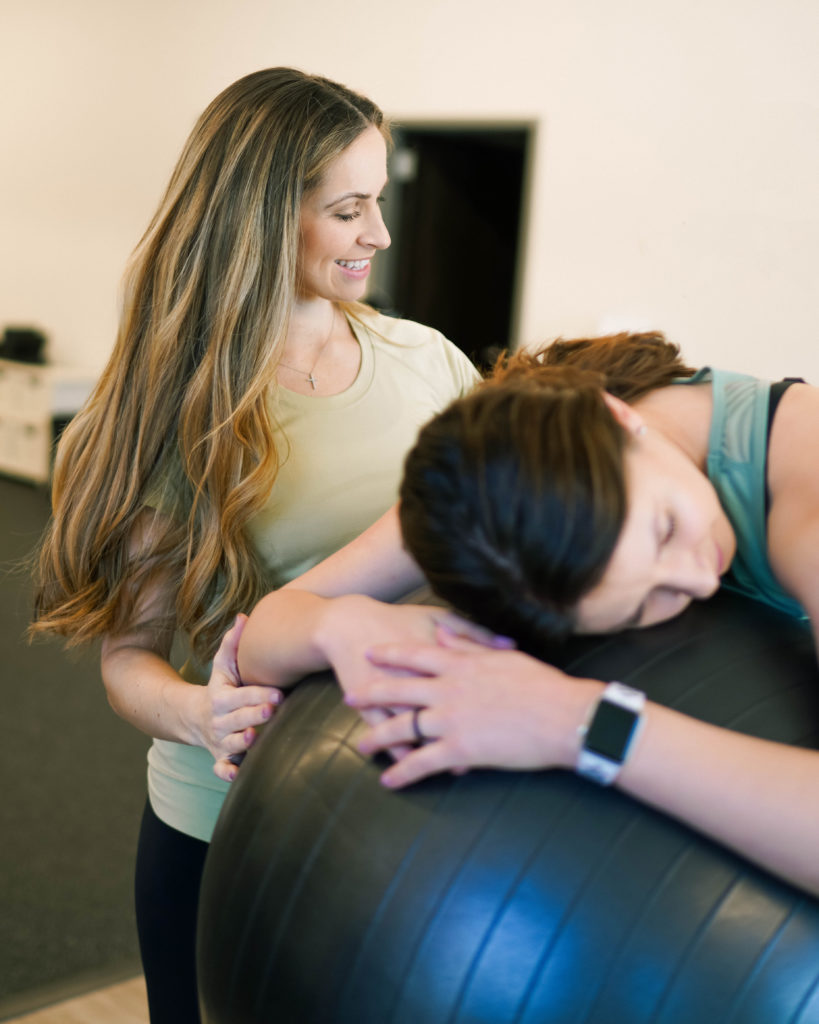
Disclosure: I only recommend products I would use myself and all opinions expressed here are our own. This post may contain affiliate links that at no additional cost to you, I may earn a small commission.
Have you ever seen an illustration or photo of a woman bouncing on a birth ball in your childbirth education books? The visual may take you right back to 90s exercise classes, childhood gymnastics, or gym class in middle school. It’s true: a birth ball and an exercise ball are one and the same!
As it turns out, this everyday item can actually be a powerful tool in your labor and delivery if you know how to use it properly. Throw away those old exercise visuals – today, we’re unpacking how a birth ball can serve you well through your pregnancy and in childbirth!
What is a birth ball?
It’s true that a birth ball is “just” an exercise ball, but sizing definitely matters here! Make sure you’re reaching for a ball with dimensions that will support you in various positions. For the best pelvis positioning, your hips should be ever so slightly above your knees when you’re seated on the ball.
Remember, before you ever start pushing, you want your baby to be nice and low in the bottom of your pelvis.
A birth ball can be used not only during labor, but in the third trimester (and really all of pregnancy) to help engage your baby in your pelvis
What does engaged in the pelvis mean?
When the widest part of your baby’s head has entered the pelvis, your baby is officially “engaged.” Many resources refer to this as “lightening” because as your baby has dropped into the pelvis it has created more room in your abdomen which can make you feel lighter. You may feel you are able to take deeper breaths and may notice any rib pain has decreased. On the flipside, because your baby is lower and in the pelvis, you may notice increased pelvic pain due to the increased pressure of your baby’s head.
5 ways to use a birth ball in pregnancy and delivery
Whether you’re trying to maintain mobility throughout your third trimester or you’re in full-on delivery prep mode, a birth ball is a great thing to have by your side. If you’re on the hunt for one, I have this one and I love it! My free mobility guide offers a ton of helpful exercises for functional pregnancy and postpartum movement, but let’s go over the 5 most popular ways to use a birth ball today. You can see some of them in action in my recent reel!
1. On all fours draped over the ball
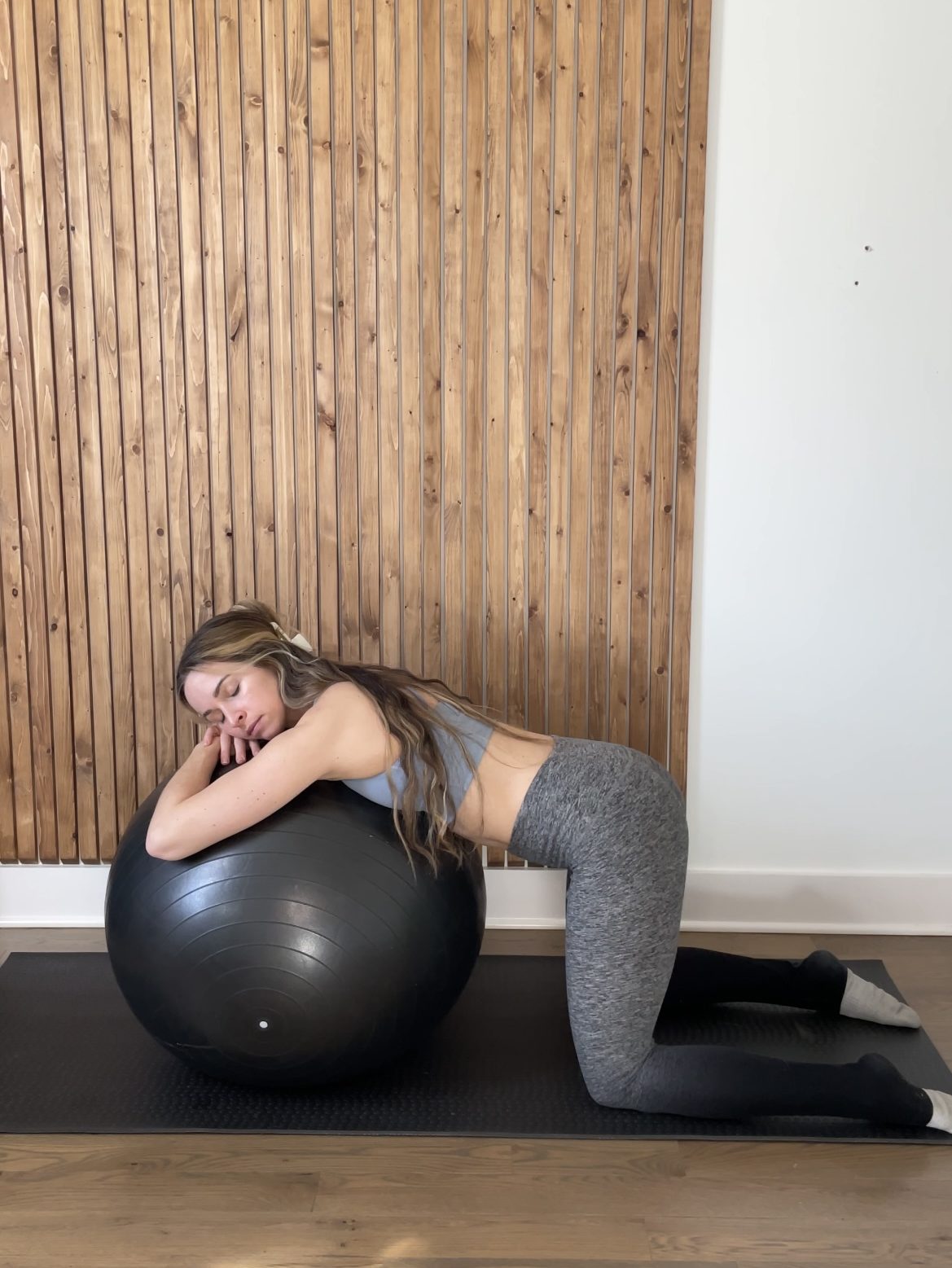
This position allows the birth ball to support your upper body – a much needed thing that’s often overlooked in the delivery room! You can add gentle movement side to side, front to back, or in circles, focusing on what gives your body relief. This is also a great position for pelvic tilts, tucking your tailbone under you and then extending it.
Positioning tip: If you are close to pushing, or are pushing, make sure you have your feet slightly wider than your knees. This will help to open the bottom of the pelvis to create more space when your baby is exiting!
2. Side lunge draped over the ball
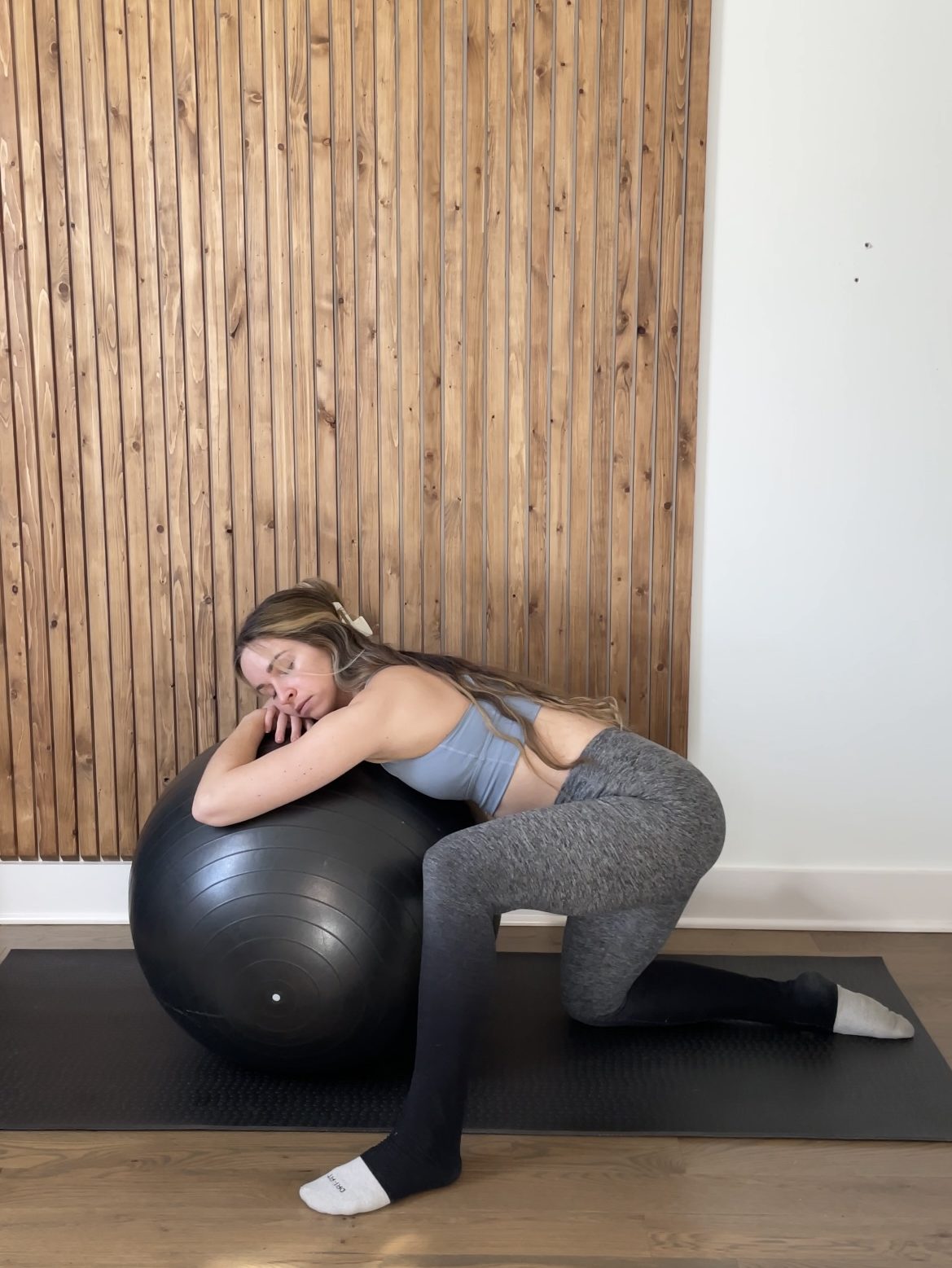
We often think about doing things symmetrically – using both legs or arms to position ourselves. But this asymmetrical movement can really help open up the mid portion of the pelvis which can be helpful in cases where your baby may have stalled. A stalled labor refers to a slowed or paused progression of labor.
To get into position here, drape yourself over the ball to support your upper body. Then pull one leg to the front, kneeling on your back knee. Take some deep breaths to settle into the pose.
Positioning tip: Gently rocking forward-backward or side-to-side can help you open up your pelvis. Don’t be afraid to move — just keep your movements gentle and controlled.
3. Assisted deep squat
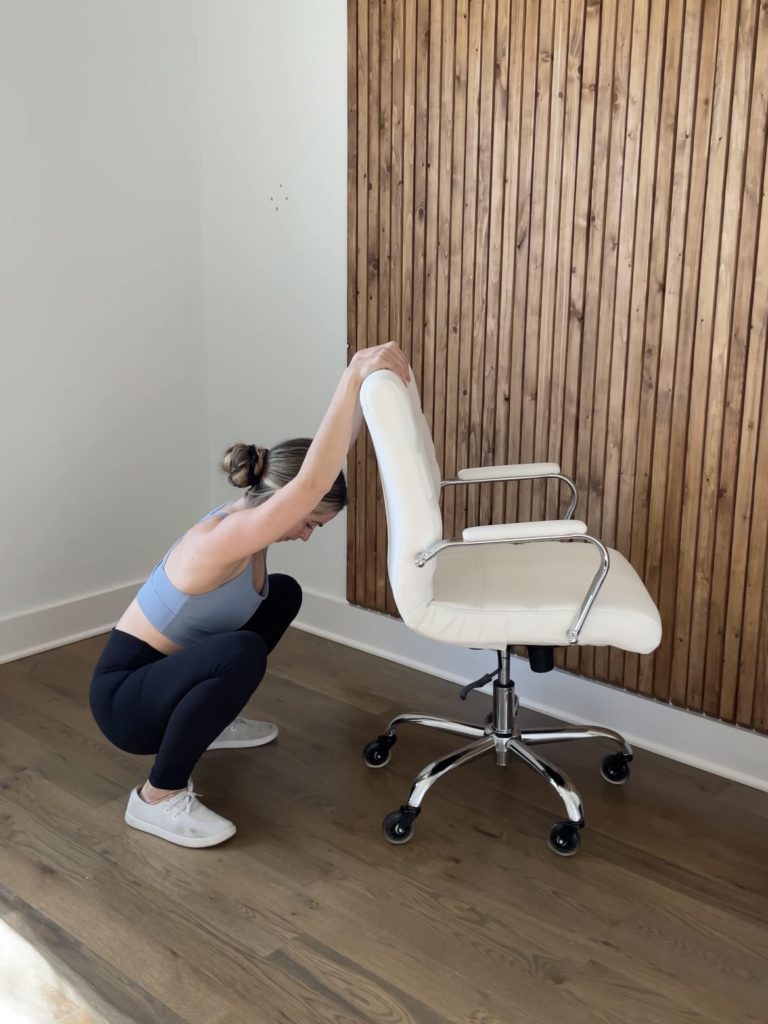
A deep squat engages the top of the pelvis. It’s one of the absolute best positions for helping your baby engage into your pelvis and get into the right position for delivery. Opening the top, midsection, and bottom of your pelvis matters, helping your pelvic floor prepare for labor.
Positioning tip: This may not be your go-to pose if you have limited hip or ankle mobility, and that’s okay! One trick that may help involves rolling a towel and placing it beneath your heels to help accommodate lack of foot mobility. If you’re able to get into this position, it’s super helpful in helping your pelvic floor open and relax.
4. Pelvic circles
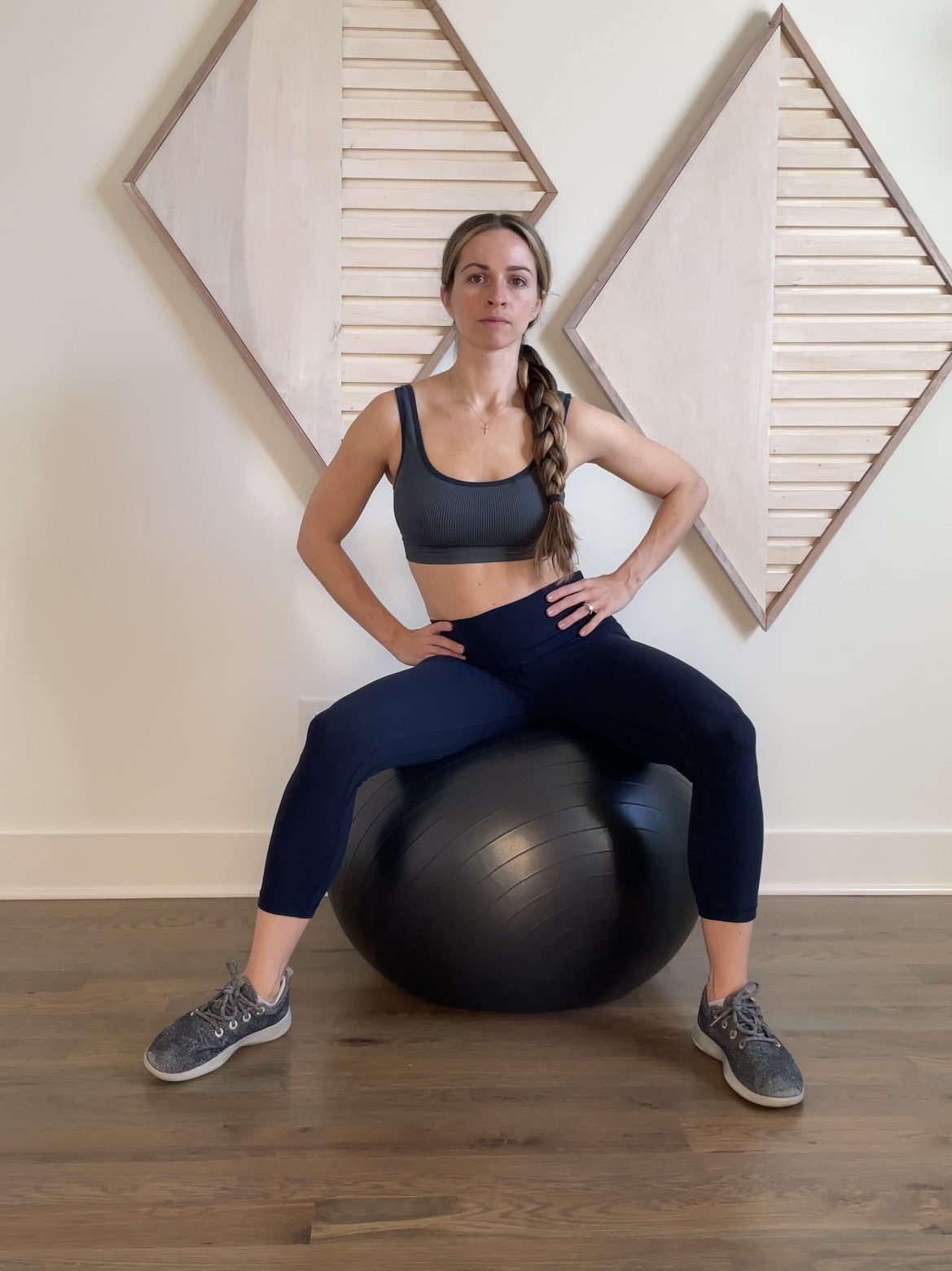
To get into this position, sit upright on the ball. Good posture is key for this one — no slouching allowed! Once you’re situated on the ball, make small circles. Try to isolate your pelvis rather than moving your entire body! If it feels weird, imagine you’re hula hooping.
Positioning tip: You can do small or large circles (I recommend both)! And don’t forget to alternate and go in both directions. You can either do one direction, then the other, or you can level up into a figure 8 movement. Again, it’s about finding a pace that works for your body.
5. Standing with (or without) the ball propped on a table, chair, or bed
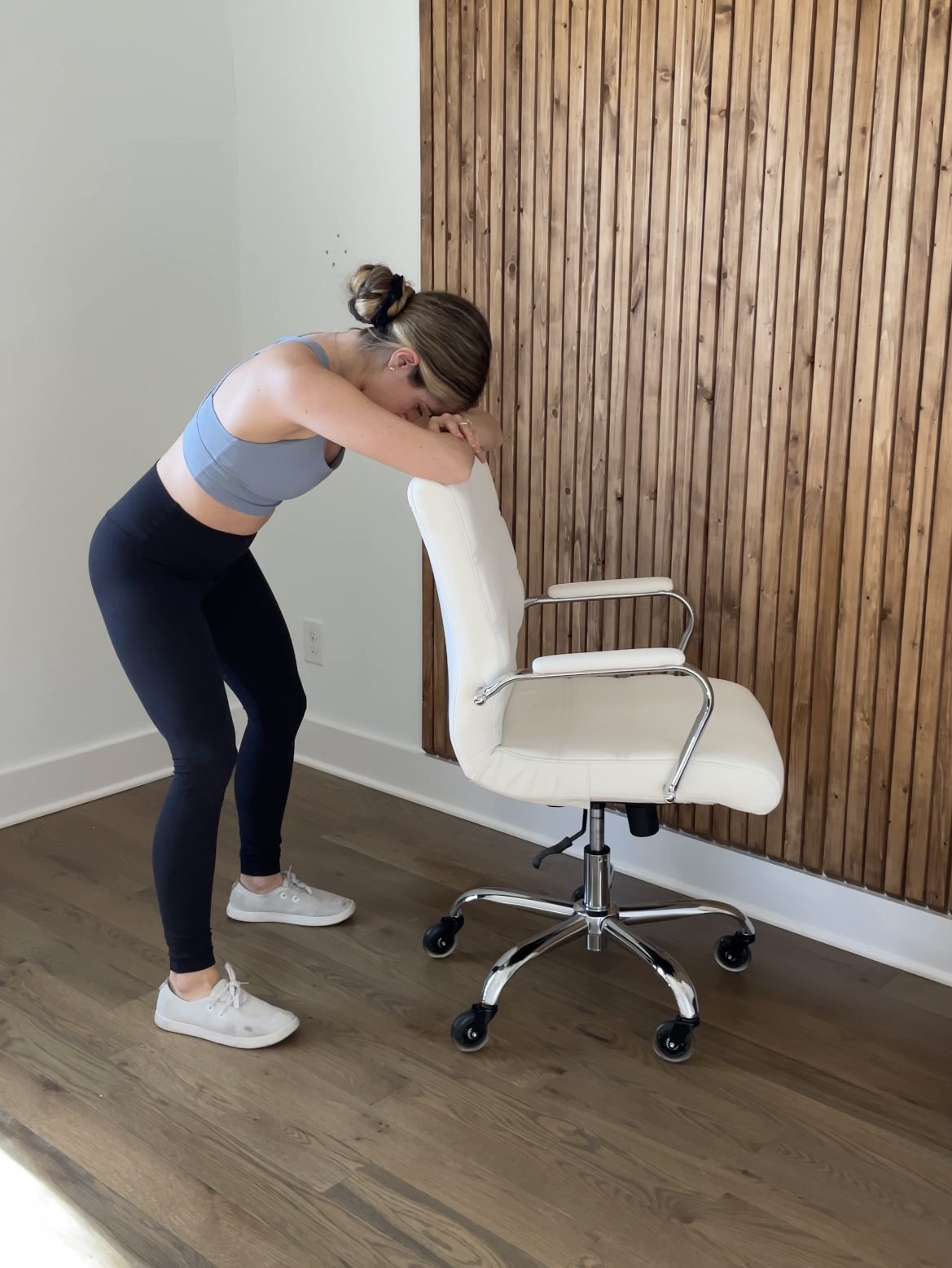
Standing is underrated in delivery, in my opinion. Full body movement is a really good way to facilitate movement of your baby as well as a distraction from labor contractions. Not to mention, gravity is your best friend in this position to help your baby get lower in the pelvis! Drape your upper body over the ball and rock side to side if it feels good.
Positioning tip: Keep your stance wide! This allows your pelvic floor to continue relaxing and opening.
When to use the birth ball
There’s no need to wait until contractions kick in to reach for your birth ball! In fact, all five of these movements can be performed in the third trimester. They’ll facilitate pelvic floor relaxation and improve mobility of your pelvic floor and hip muscles before it’s time for the baby to arrive.
Once you are in labor, remember to perform diaphragmatic breathing exercises throughout the process. It’s generally advised to change positions every 20-30 minutes during labor, so keeping a few of these moves in your back pocket can give you some much needed relief! And one last important note: labor is exhausting. Take a rest when you need to!
Want even more birth ball tips and tricks? My Movement Through Pregnancy program includes guided movements on a birth ball incorporated throughout all of the trimesters, with an additional focus in the third trimester to get you ready for labor. I hope your birth ball becomes a valuable resource throughout your pregnancy and delivery!